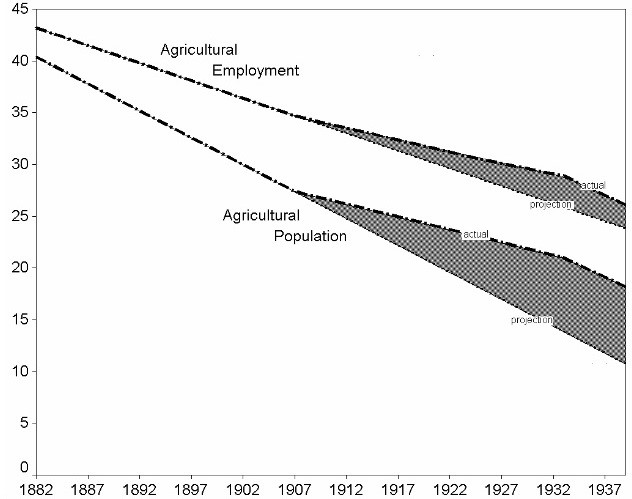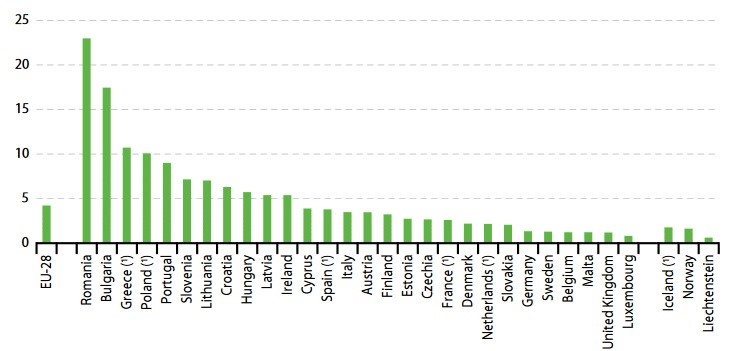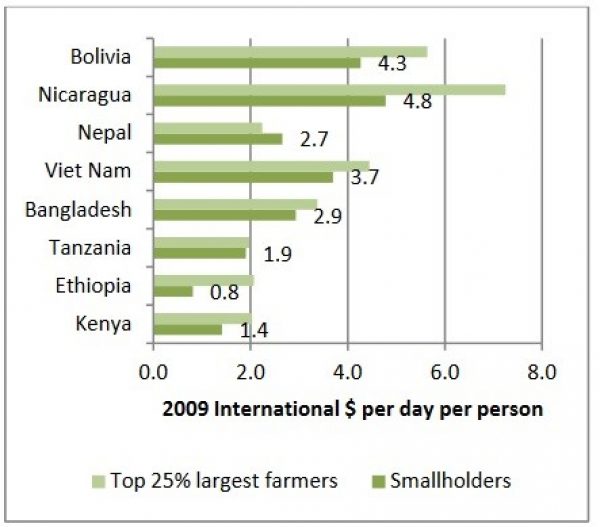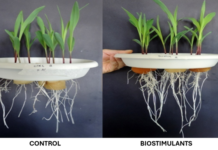Income, $ per person per day. Source: Smallholder Farmers’ DataPortrait.
Asking ‘how many farmer Africa needs‘, or for that matter, any continent/country needs, is the same as asking ‘how many doctors, lawyers, engineers, schools, hospitals, etc., are needed?’
The answer depends on what do you wish to achieve.
Smallholder Farmers
“About two-thirds of the developing world’s 3 billion rural people live in about 475 million small farm households, working on land plots smaller than 2 hectares.
Many are poor (earning less than 1.9 $/day. N.I.) and food insecure and have limited access to markets and services.” (Source: FAO)
| The bottom line to notice and remember is that today; “many are poor“, and “food insecure“.
This is not the kind of life level we would like to see for them and others. Analyzing deeper the situation, we further learned that, “today, smallholders produce most of the food consumed in the developing world but their productivity growth has slowed down and is generally lagging… The gap between small farmers’ yields and technical potential yields – the ones achieved with the latest varieties and under the best conditions – reflects the largely suboptimal use of inputs and insufficient adoption of most productive technologies.” (Source: FAO)  To fully grasp the extent of the gap, we should add to that the ‘yield gap’ is creating a huge ‘income gap’. ‘Income gap’ is the difference in income per kg a farmer received in a developed country versus undeveloped country. That difference can be in the magnitudes of 10 and even 100 times! That explains why very often the ratio of small-holders’ poverty is higher than the national ratio. The Two Economic Paths One option is to continue current economic policies towards agriculture and smallholders. In this case, we know the results we can expect, which will not be different from the current poverty situation. The other option is to Intensify and Industrialize Agriculture, by focusing on specific agricultural sectors, which has the highest potential for economic development. Part of the economic development is realizing the agricultural export potential, and its ability to bring in foreign currency. In this case, the focus will not be limited to the farmers alone, but to the entire value chain that will enable the promotion of the industry, such as R&D, organization, logistics, regulation, and marketing. This will create a strong and lively agricultural sector, something that others would like to copy. The German Example Germany is a leading agricultural country, situated in the heart of Europe. So let us take it as an example of successful historical development of an agricultural sector. In 1882, over 40% of the Germany population was engaged in agriculture.  Fifty years later, that number has dropped to 20% only.And today? Less than 2% of the Germans are farmers.  Does Germany suffer from hunger or food shortages? Has the German economy weakened because of the drop in the number of farmers? Did unemployment rise as a result? It is clear to everyone that the answer to these questions is negative. Germany represents advanced agriculture and is no exception. In general, the average rate of employment in agriculture does not exceed 5% in EU countries. The more developed the agriculture, the lower the rate of farmers.  Israel In 1950 most of Israel’s farmers were smallholders, owning and working 2-3 hectares only. Seventy years later, today, a typical Israeli farmer cultivate 5 to 50 hectares, with few farms over 100 hectares. In 2019 less than 0.5% of Israel’s workforce are farmers. From here, you can conclude how developed Israel’s agriculture is. Yet, there is no shortage of food, the Israeli economy is strong, stable. Thanks to the export-oriented marketing approach, Israeli farmers produce well beyond the local market needs and requirements, hence bringing desired foreign currency, and prosperity to farmers and related industries. Why Can’t Africa Follow the German and Israeli Example? It is not an easy task, changing the agricultural sector is changing the economy. This dramatic task requires long term vision, perseverance, and leadership at the highest level. I believe that a strong agricultural sector is mandatory and positive for all agrarian countries. It is clear that the transition is hard and risky, especially if you don’t have your own – experienced and tested – ‘Road Map’. That change conducting ‘Road Map’ is what I call – a Model. To facilitate the transition Biofeed created the Green Valley National Export Project (GVNEP), model. It is designed to enable the transition from low-yield, poor-quality to high-yield, high quality, export-oriented economy! This article was inspired by a post I recently published on the same topic, as part of The Agricultural Gap video series. Link to YouTube, chapter 7. Subscribe to be notified of new videos. |









